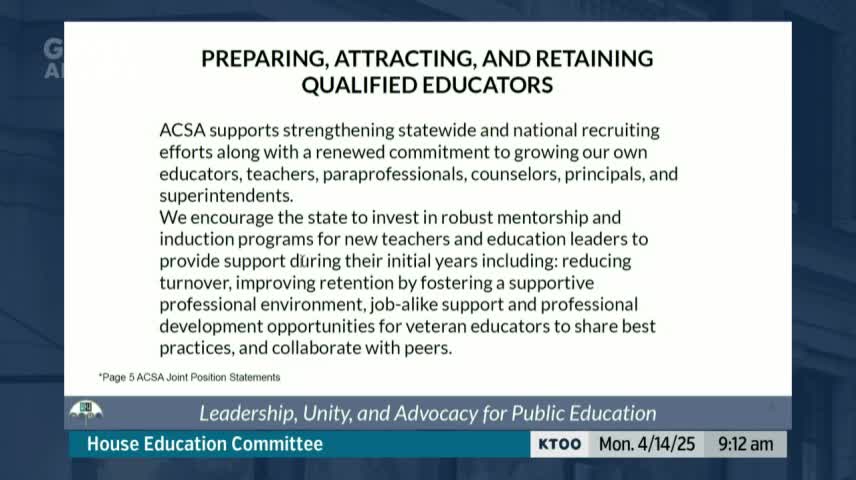Alaska faces teacher shortages as educator interest hits historic lows
April 14, 2025 | 2025 Legislature Alaska, Alaska
Thanks to Scribe from Workplace AI , all articles about Alaska are free for you to enjoy throughout 2025!

This article was created by AI using a video recording of the meeting. It summarizes the key points discussed, but for full details and context, please refer to the video of the full meeting. Link to Full Meeting
Experts at the meeting pointed out that the state has historically relied on recruiting teachers from the continental United States, but this pool is shrinking as many states grapple with their own staffing shortages. The situation is exacerbated by a nationwide decline in interest in teaching, with recent studies indicating that only 5% of college freshmen express a desire to enter the profession, down from 20% in the 1970s. This decline is mirrored by a 40% drop in interest among high school seniors since the 1990s.
Job satisfaction among teachers is also at an all-time low, with only 12% reporting they are very satisfied with their jobs. Factors contributing to this dissatisfaction include burnout, stagnant wages, and political interference. While the COVID-19 pandemic has intensified these issues, many of the challenges predate 2020, indicating a deeper structural problem within the education system.
The meeting underscored the urgent need for support in teacher preparation programs, particularly at the University of Alaska, which is producing qualified graduates. However, the gap between the number of graduates and the available teaching positions remains significant. Rural and high-poverty districts are particularly affected, struggling to recruit and retain staff in critical areas such as special education, STEM, and bilingual education.
In response to these challenges, the state’s special education organization has joined forces with the Alaska Council of School Administrators, aiming to address the pressing issues in special education and improve overall support for teachers. The discussions at this meeting reflect a critical moment for Alaska's education system, as stakeholders seek solutions to ensure that all students have access to qualified educators.
Converted from 04/14/2025 08:00 AM House EDUCATION meeting on April 14, 2025
Link to Full Meeting
Comments
View full meeting
This article is based on a recent meeting—watch the full video and explore the complete transcript for deeper insights into the discussion.
View full meeting